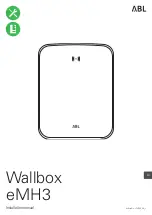
169
Uniform Tire Quality Grading
Quality grades can be found where appli-
cable on the tire sidewall between tread
shoulder and maximum section width.
For example:
Treadwear 200 Traction AA
Temperature A
DOT Quality Grades
Treadwear
Traction AA A B C
Temperature A B C
All passenger car tires must conform
to Federal Safety Requirements in
addition to these grades.
<
Treadwear
The treadwear grade is a comparative rat-
ing based on the wear rate of the tire when
tested under controlled conditions on a
specified government test course.
For example, a tire graded 150 would wear
one and one-half, 1
g
, times as well on the
government course as a tire graded 100.
The relative performance of tires depends
upon the actual conditions of their use,
however, and may depart significantly from
the norm due to variations in driving habits,
service practices and differences in road
characteristics and climate.
Traction
The traction grades, from highest to lowest,
are AA, A, B, and C.
Those grades represent the tire's ability to
stop on wet pavement as measured under
controlled conditions on specified govern-
ment test surfaces of asphalt and concrete.
A tire marked C may have poor traction
performance.
The traction grade assigned to this
tire is based on straight-ahead brak-
ing traction tests, and does not include
acceleration, cornering, hydroplaning, or
peak traction characteristics.
<
Temperature
The temperature grades are A, the highest,
B, and C, representing the tire's resistance
to the generation of heat and its ability to
dissipate heat when tested under con-
trolled conditions on a specified indoor lab-
oratory test wheel.
Sustained high temperature can cause the
material of the tire to degenerate and
reduce tire life, and excessive temperature
can lead to sudden tire failure. The grade C
corresponds to a level of performance
which all passenger car tires must meet
under the Federal Motor Vehicle Safety
Standard No. 109. Grades B and A repre-
sent higher levels of performance on the
laboratory test wheel than the minimum
required by law.
The temperature grade for this tire is
established for a tire that is properly
inflated and not overloaded. Excessive
speed, underinflation, or excessive load-
ing, either separately or in combination,
can cause heat buildup and possible tire
failure.
<
RSC – run-flat tires
You will recognize run-flat tires by a circular
symbol containing the letters RSC on the
side of the tire, refer to page
M+S
Winter and all-season tires.
These have better winter properties than
summer tires.
Tire condition
Inspect your tires frequently for tread wear,
signs of damage and for foreign objects
lodged in the tread. Check the tread depth.
Minimum tread depth
The tread depth should not drop below
0.12 in/3 mm, although, for example, Euro-
pean legislation only specifies a minimum
tread depth of 0.063 in/1.6 mm. At tread
depths below 0.12 in/3 mm there is an
increased risk of high-speed hydroplaning,
Online Edition for Part No. 01 41 0 158 159 - © 02/04 BMW AG
Содержание 525I SEDAN
Страница 2: ...Online Edition for Part No 01 41 0 158 159 02 04 BMW AG...
Страница 10: ...Online Edition for Part No 01 41 0 158 159 02 04 BMW AG...
Страница 25: ...At a glance 23 Reference Controls Driving tips Communications Navigation Entertainment Mobility...
Страница 26: ...Online Edition for Part No 01 41 0 158 159 02 04 BMW AG...
Страница 104: ...Online Edition for Part No 01 41 0 158 159 02 04 BMW AG...
Страница 110: ...Online Edition for Part No 01 41 0 158 159 02 04 BMW AG...
Страница 127: ...Navigation Driving tips 125 Reference At a glance Controls Communications Entertainment Mobility...
Страница 128: ...Online Edition for Part No 01 41 0 158 159 02 04 BMW AG...
Страница 146: ...Online Edition for Part No 01 41 0 158 159 02 04 BMW AG...
Страница 164: ...Online Edition for Part No 01 41 0 158 159 02 04 BMW AG...
Страница 195: ...Mobility 193 Reference At a glance Controls Driving tips Communications Navigation Entertainment...
Страница 196: ...Online Edition for Part No 01 41 0 158 159 02 04 BMW AG...
Страница 223: ...5 US En...
















































